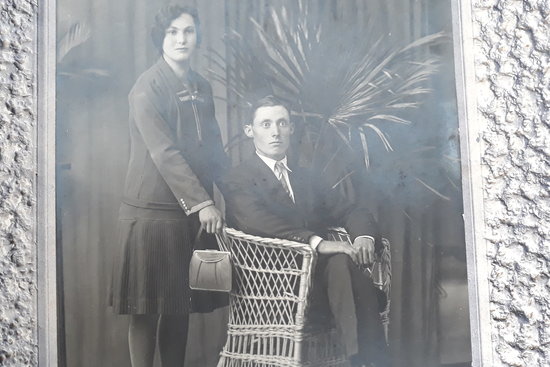The two sides of the Civil War legacy
The return of the remains of a Republican soldier found in an unmarked grave provide a stark contrast to the exhumation of dictator Franco

On Friday, the family members of a soldier killed on the Repubican front during the Spanish Civil War (1936-1939) finally took possession of their relative's remains in a simple ceremony in the town hall of Sant Joan de les Abadesses, in the northern region of Girona.
Tomàs Verdaguer Roqué died fighting on the Segre frontline aged 34, and his body was later buried in a mass grave in Soleràs, in the nearby county of Les Garrigues. It has taken more than 80 years for his remains to be finally returned to his family.
The return of Roqué's remains comes in stark contrast to the exhumation and reburial of those of Spain's late dictator Francisco Franco on Thursday, which was carried out with all the solemnity and media coverage reminiscent of a state funeral.
Removing Franco's remains from the Valley of the Fallen memorial site near Madrid, built to remember the losses on both sides of the war, fulfilled a long-standing election pledge by the Socialist party, although the way it was carried out appeared to please few.
Criticism of the exhumation
Some public figures accused the operation to transfer Franco's remains from his specially constructed mausoleum to a family tomb in a cemetery outside Madrid of exalting a figure who began a war that led to 500,000 deaths and a 40-year-long repressive dictatorship.
Others accused Spain's Socialist government of using the exhumation as a way of garnering votes ahead of the November 10 general election, although acting president, Pedro Sánchez, denied the charge, saying the reburial was carried out as soon as was possible.
📽️ 44 years after his death, the remains of Spain's late dictator Francisco Franco were removed from the Valley of the Fallen on Thursday
— Catalan News (@catalannews) October 25, 2019
Learn all the details https://t.co/Xc3GuVthcu pic.twitter.com/cB67l9B2Rf
Still others pointed out that while Franco was reburied next to his widow in the presence of his family, many other families around Spain still do not know where their forebears lie. It is estimated that some 100,000 victims of the Civil War still lie in unmarked graves.
Even the 33,000 bodies buried in the Valley of the Fallen, which was meant to remember the war dead, were dug up from mass graves and cemeteries around Spain without the permission of their families in order to be reburied in the memorial site.
Reparation too little, too late
The efforts of reconciliation and reparation in Spain have been a case of too little, too late in the opinion of many. While a former Socialist government passed a historical memory law in 2007, the work to find and rebury the remaining war dead has gone at a snail's pace.
In 2008, judge Baltasar Garzón began an investigation into the missing dead, controversially ordering mass graves to be opened. However, that effort came to little after Garzón was suspended in 2010 by the Supreme Court for contravening the amnesty law of 1977,
Meanwhile, other efforts at reparation have been made on a more local level, such as the Catalan government's program to identify bodies in mass graves, catalogue them and return the remains to their families. Such is the case of Tomàs Verdaguer Roqué.
Franco exhumation "humiliating"
"We're lucky because we have what other people do not," said Tomàs' grandson, Xavier Verdaguer, on Friday, adding that the exhumation and reburial of Franco's remains on Thursday was "humiliating" for the families of other missing Civil War victims.
The Catalan government's plan led to the excavation of the mass grave in the cemetery in Soleràs where Tomàs' remains were found in 2017. It is the largest mass grave found so far in Catalonia and contained the remains of 146 individuals.